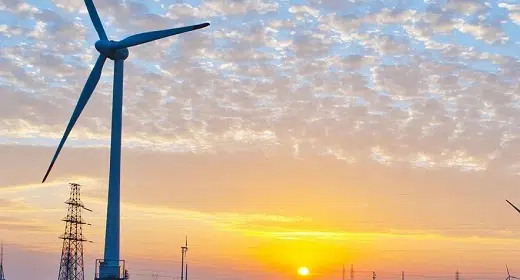by Michelle Lewis: In the landmark Intergovernmental Panel on Climate Change (IPCC) report released today, there’s good news and bad news.
We’re spotlighting the good news: EVs and clean energy can help us limit climate change…
The bad news is that we are on the brink of missing the opportunity to avoid catastrophic climate change. The report states that global emissions must peak by 2025 for the chance to limit temperature increases to the 1.5C goal set out in the Paris Agreement. Global emissions must then fall by 43% by 2030, as well as a reduction in methane emissions of around 33%, from 2019 levels.
The good news in the IPCC report
But the good news is that we already have the technology and financial ability globally to slash emissions by 2030.
The IPCC Working Group III Sixth Assessment Report, which was approved by 195 member governments of the IPCC, is, at 3,675 pages, a huge and comprehensive report. Hoesung Lee, chair of the IPCC, said:
This report is a dire warning about the consequences of inaction.
It shows that climate change is a grave and mounting threat to our well-being and a healthy planet. Our actions today will shape how people adapt and nature responds to increasing climate risks.
We at Electrek, and no doubt you, if you read about climate change, EVs, and clean energy in general, already know that.
But this particular report isn’t just doom and gloom. It “combines strategies to adapt to climate change with actions to reduce greenhouse gas emissions to support sustainable development for everyone.” And that’s what we’re highlighting today.
It asserts that building wind and solar is the most impactful and cheapest way to keep temperatures to 1.5C.
BusinessGreen points out:
Since 2010, there have been sustained decreases of up to 85% in the costs of solar and wind energy, as well as sharp falls in the cost of batteries for storage and electric vehicles (EVs), while an increasing range of policies has helped tackle deforestation, boost energy efficiency, and accelerate the rollout of renewable energy sources, the report points out.
Key IPCC report takeaways that environmental nonprofit think tank Ember highlighted include:
- Global carbon dioxide emissions need to fall by 24 gigatons (43%) by 2030 for a 1.5C pathway.
- The IPCC shows that wind power has the potential to deliver 3.9 gigatons of emissions savings, and solar 4.5 gigatons by 2030. So, combined, they can provide over one-third of the total emissions reductions necessary by 2030.
- The report shows that over half of emissions reductions from wind and solar will actually save money, compared to the “business as usual” scenario.
Further, when it comes to coal, it’s a big fat “ditch it now.”
- Running existing fossil-fueled infrastructure to the end of its lifetime would result in higher emissions (660 gigatons) than the world’s total carbon budget to reach 1.5C (510 gigatons), and that “the majority [of this] is in the power sector.”
- The IPCC says the major options include “decommissioning and reduced utilization of existing fossil-fuel-based power sector infrastructure” and “cancellation of new coal installations.”
In global modeled pathways that limit warming to 2C, “in 2050 almost all electricity is supplied from zero or low-carbon sources, combined with increased electrification of energy demand.” (2C isn’t good enough, so we will need to reach 100% renewables earlier.)
Seeing how 10% of the world’s electricity is currently from wind and solar (see the story below), it’s clear that wind and solar can and must be the backbone of a future electrified world.
What the experts say
Dave Jones, Ember’s global lead, said in an emailed statement:
A clean electrified future is the pathway to a safe climate. We’ve long known that coal power must collapse this decade, but the latest IPCC report makes it crystal clear. A massive global effort to ramp up clean electricity this decade puts the power sector on track for 1.5 degrees.
UN Environment Programme executive director Inger Andersen said in an emailed statement:
The first two IPCC reports told us that climate change is here, now, and causing huge disruption to the natural world and human well-being. This report tells us that we are still not doing enough to cut greenhouse gas emissions, confirming the findings of UNEP’s 2021 Emissions Gap Report.
The IPCC tells us that we have the knowledge and technology to get it done. Through a rapid shift from fossil fuels to renewables and alternative fuels. Through moving from deforestation to restoration. Through backing nature in our landscapes, oceans, and cities. Through transforming our cities into green and clean spaces. And through behavior change to address the demand side of the equation.
Manish Bapna, president and CEO of Natural Resources Defense Council, made the following statement:
The good news is that we have the climate solutions needed, and they work. While the fossil industry tries to exploit the crisis in Ukraine and lock us in to decades more dependency, this report affirms tremendous gains, here at home and abroad, in clean energy – in wind and solar power and battery storage – and foresees little future for fossil fuels. But we simply have to move much faster.
Electrek’s Take
This landmark report, as I wrote above, reinforces what we at Electrek already know, and this is why we focus on clean energy and electric vehicles. None of the IPCC’s findings were a surprise to us.
But it’s good to have an impactful global report reiterate this message. To repeat ourselves, the world must step up right now and implement renewables as quickly as possible, as well as ditch fossil fuels.










































